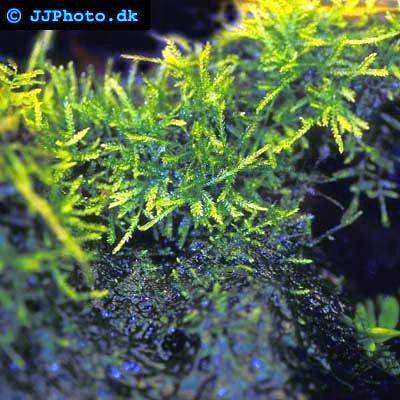Growing Java Moss - Conditions, Maintenance, Description
Quick links - Answers
Brief Description
This page contains all information that is necessary for proper growth of Java Moss in aquariums, and additionally we'd like you to visit the following page too: Vesicularia dubyana profile. Of course we'd love to hear your experiences with this plant species at the bottom of this page - questions will be answered too!
Introduction to Java moss
Vesicularia dubyana is an aquatic plant belonging to the Hypnaceae family and it is most commonly known as Java Moss. However there is some talk about the naming of this aquatic plant because there are other classifications under which this plant can be placed. There is a debate whether or not the name of the V. dubyana is the proper name for this aquarium plant. Taxiphyllum barbieri is the other name that may eventually become the scientific name for Java Moss. This plant will grow anywhere on anything and it does not need very much care in order to do so.
Java Moss grows as a tight entanglement of stems that are covered with teeny-tiny (4mm or 0.16 inch long) leaves of olive and dark green. Unless you look at the moss really closely you might never know there are leaves covering the stems. The Java Moss will develop rhizoids which are small root-like structures that help it attach onto other objects. Rhizoids are not true roots because they do not help to absorb nutrients; in fact their sole purpose is to grab hold. This is the most common moss kept in aquariums because it is the easiest to grow.
Occurrence in Nature
Java Moss is native to India, Java and Malaysia. Although it is an aquatic plant, the Java Moss is often found growing up and out of the water, climbing rocks, trees and other surfaces.
Water Conditions
The Java Moss is very indifferent to a wide range of water conditions. It thrives in almost any condition:
- Fresh water to lightly brackish water
- Very little light to direct bright sunlight
- Wide temperature range
- Clean or murky water
This species does especially well in flowing water because it grows so densely and debris tends to get stuck in it. With a light current the debris has a better chance of getting washed away. This aquatic plant has the ability to adapt to a variety of different lighting conditions so no special lights are needed to aid in the growth of it. Low lighting is best when growing Java Moss because brighter lights only tend to promote the growth of algae, not the moss itself. This plant can survive in a very wide temperature range but it does best between 70 (21.11) and 85°F (29.44°F). It can do well in a wide pH range, between 5.0 and 8.0.
Caring for Java moss
This species is not one to plant for those who do not intend to set aside some time to tend to their underwater garden, and it will thrive in high levels of nitrite, excess food and waste. These factors make the plant a perfect addition to a betta tank for instance. It will help to metabolize the nitrites in such a tank to allow longer intervals of time between cleaning. It does not replace cleaning your fish bowls altogether; it just means the tank does not have to be cleaned quite as often with the presence of Java moss. The only precaution with this method is that you will probably need to really keep an eye on the Moss to be sure that it does not overtake the bowl and suffocate the betta (or other species) fish since plants consume oxygen at night.
Although Java Moss requires a lot of maintenance, it is not very hard to care for. In order to cut back the density of this plant, you can pull handfuls out as if it were weeds. Once every couple of weeks you can thin out the plant in this manner and you will not hurt it. Sometimes algae can grow rampant within the entanglements of this plant. Simply pull out the parts that are over grown with algae and that should solve your problem until it comes back again. If you want to completely get rid of the algae growth there are algae eliminating products that are not harmful to aquatic plants.
The Java moss has no true roots. It seems to just grow from every which direction. If you want to attach it to something such as a log or rock, use thread or string to secure the plant to the object. The moss may take a few weeks to a few months to secure itself to an object at which time you may cut away the string.
Benefits
Java Moss is a great plant to have when breeding fish. Fish fry can hide amongst this plant to seek protection from larger predators which is why it is a great attribute for live bearer tanks as many livebearers are known to eat their fry. Fully mature fish like the coolie loach can also seek refuge among Java Moss because larger predators are too big to enter these thick growths. Egg scattering fish will disperse their eggs over this plant and will not be able to eat them once they are well protected within the massive entanglement. A good, thick bed of Java Moss can be a great breeding ground for infusoria which is a great source of nutrition for new born fry.
Java moss is very helpful in maintaining water quality. Because this aquarium plant thrives in nitrite rich water, it helps to maintain nitrite levels keeping them low enough not endanger the fish before the next water change.
Picture

Sources
- Aquarium Plants Manual by Ines Scheurmann
